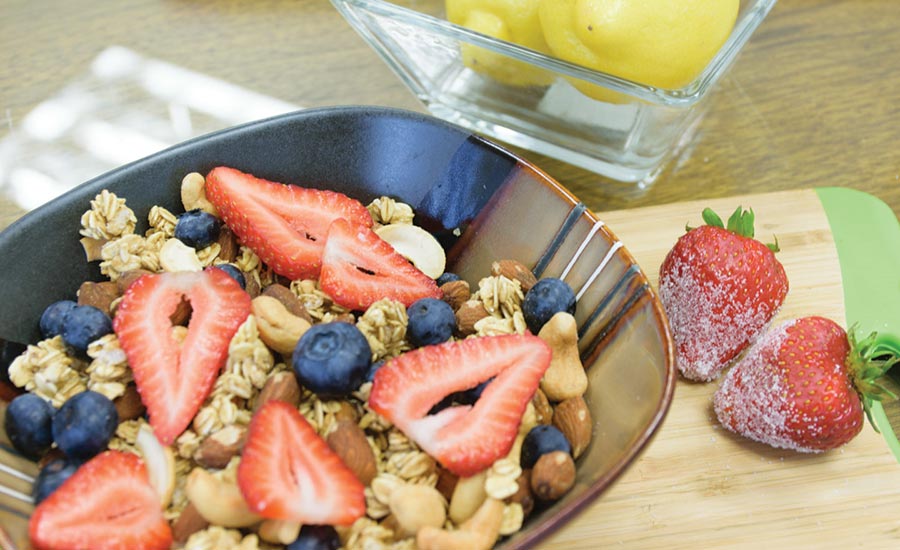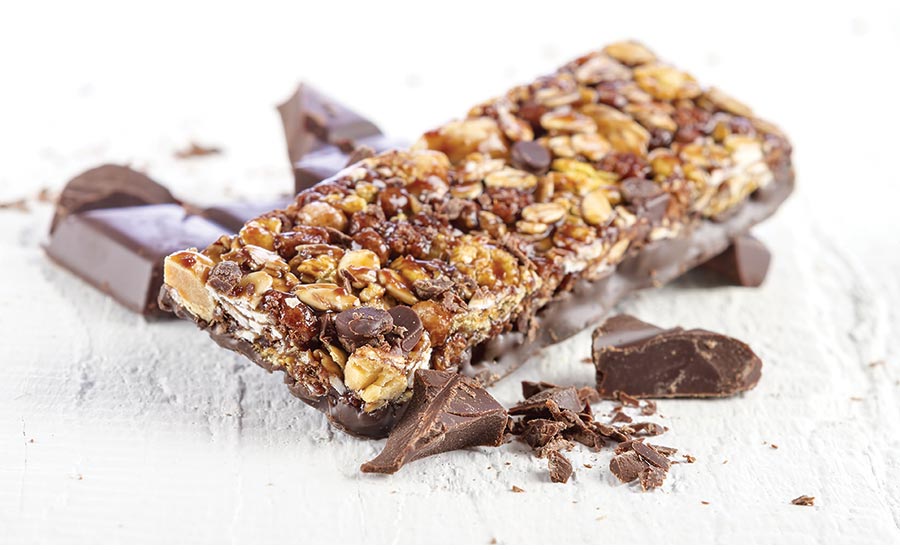The myriad of options for healthier eating are greater than ever before. From meal delivery services to organic options at the c-store, toddler meal pouches, drinkable meals and more. But it’s the rare “better for you” food or beverage that can succeed without some sort of fortification.
Fortification, whether in the form of single ingredients or premixes of multiple ingredients has been a game-changer in better-for-you formulation for years. Just think of vitamin D in milk and folate in flour. The former has been added to milk since the 1920s and the FDA instituted the latter in 1998. But today, fortification and premixes for same can include everything from added botanicals and nutraceuticals to pre- and probiotic compounds.
Fortification is no longer perceived as simple supplementation. Rather, it is accepted as a reliable means to ensure daily intake of essential nutrients at every age. In fact, consumers now readily switch brands for products that tout added benefits – products that simplify daily routines and offer more healthy bang for the buck.

Fortification with single ingredients or with premixes of multiple ingredients, such as in RTE cereals, has become a true game-changer in better-for-you prepared foods.
PHOTO COURTESY OF: Watson Inc. (www.watson-inc.com)
Tailored nutrition options are important for people of all ages and in a variety of environments. This is why such trends as medical nutrition have taken off. And while many such products begin targeting a specific demographic say, seniors or other nutritionally at-risk residents of institutions, or various classes of athletes, a lot of them eventually make their way into the mainstream.
Crafting the right fortification systems requires continued cutting-edge science, knowledge-sharing, comprehensive insights into consumers, and developments of state-of-the-art technologies. The increase in application of these approaches are evident in the recent efforts toward more personalized nutrition.
A recent example of a collaboration to help consumers achieve their optimal health by meeting their unique nutrition requirements is the partnership between a global ingredient company and digital personalized nutrition health company, Mixfit Inc. Mixfit’s Intelligent Nutrition Assistant (MINA) program analyzes a person’s genetic makeup, diet, lifestyle, and health goals, to create and dispense beverages containing a customized mixture fortified with blends of their daily vitamins and mineral needs.
Mixing it Up
Food and beverage manufacturers are getting ahead of this trend thanks to novel, customized premixes.
New Labeling
A coming challenge in premixes and fortifications involves the FDA’s newly mandated Nutrition Facts labeling revisions. New labels must be in place by January 1, 2020. One aspect of this is that international units currently the units of measure for vitamins A, D, and E will be replaced with actual nutrient delivery weights. While these are considered more easily understood, this change will make it more critical to ensure that manufacturers know exactly how much of specific nutrients they are including in their products, and servings, and to ensure accurate nutrition facts that meet labelling requirements.
According to ResearchAndMarkets.com, the premix market is expected to hit nearly $2 billion by 2023, a 6.5% CAGR.
Such rapid growth can be attributed to advances in processing technology, ingredient delivery methods, heightened consumer awareness of the benefits of preventative nutrition, and growing demands to address nutrient deficiencies from food intolerances and disease states. New developments in fortification and premixes for foods and beverages have extended beyond vitamins and minerals. Today’s systems include a broad array of individual and combined novel additives from vitamin D, co-enzyme Q10, plant-based proteins, vitamin E, and prebiotics and probiotics.
Premixes Work
An increasing number of ingredient providers are moving into premix technology. Working closely with product developers, they commit to a collaborative approach in the development of premixes and other custom blends. This not only helps to expedite, but ensure a more successful R&D effort, leading to quicker development and product launches.
Formulating with premixes saves time by improving purchasing efficiency by minimizing the number of raw materials and vendors. Other benefits include: reduced scaling process; supplier provided product development support and technical guidance from concept through launch; development of nutritional components tailored to meet production and marketing goals; reduced freight and storage costs; reduced waste and labor costs.
Powdered sport nutrition products and vitamin supplements have been at the forefront of premix development. For many of these, the benefits are twofold: nutritional and practical. For one supplier, this duality comes from development of a high-elemental-content calcium (approximately 40%, making it among the most concentrated and highly bioavailable sources of calcium marketed).

Mineral fortifications, such as with phosphates and calcium, often serve a dual purpose of providing formulation functionality and nutritional benefits.
PHOTO COURTESY OF: Innophos Holdings Inc. (www.innophos.com)
The consistent porosity of the calcium particles in the system also provides carrier capacity for vitamins, flavorants, and other active compounds. As such, it can be used as an efficient fortification agent, allowing calcium-related claims to be made. An added benefit is that these unique and innovative forms of minerals allows them to act as flow aids and anti-caking agents while minimizing dusting.
As noted, many premixes today are custom-formulated to include more than just vitamins and minerals. They also incorporate such functional ingredients as fibers, gums, amino acids, proteins, botanicals, and more. Custom premixes can deliver precise combinations of micro- and macronutrients specifically designed to suit application requirements.
According to suppliers, when such mixtures of ingredients are added to a food product or beverage, they must be added in precise amounts, proper chemical forms, and at the right time during the production process in order to achieve accurate and active fortification. Because every food product and process is unique, there is no single formula to satisfy every need.
Technical advances include microencapsulation, which can be useful in masking the flavors associated with some vitamins and botanicals. Another novel development is particle size management. Manufacturers can now work with premix suppliers to change particle size by grinding and micronizing to decrease particle size or agglomerate or granulate to increase particle size. These capabilities allow formulators to include a wider range of ingredients in a custom premix without the risk of separation or loss of homogeneity.
Live Fortification
The current trend in fermented foods gives insight into an area of fortification not often examined as such. Yet fortifying is an integral part of this segment of food production in that living organisms are included to enhance nutritive value of a food or beverage.
As an example, the processes of lactic acid preparation and preservation presents multiple aspects of vitamin and mineral preservation and alteration. Lactic acid fermentation is used to avoid perishability, improve palatability, and enhance nutritional quality.
However, it also involves the fortification of a formulation with beneficial bacteria (and sometimes the oligosaccharides and fibers they feed on) to attain the nutritionally enhanced final product.

The bakery industry takes advantage of expertly metered ingredient combinations to control strength, structure, texture, and flavor, and inhibit mold and staling.
PHOTO COURTESY OF: Delavau LLC (www.delavaufood.com)
“Most lactic acid-fermenting microorganisms produce organic acids, such as lactate, acetate, propionate, and butyrate,” explains Kantha Shelke, PhD, CFS Food Scientist & Principal for Corvus Blue LLC and adjunct professor of food safety regulations at Johns Hopkins University. These compounds have been studied for several health benefits, including increased digestibility, immune system support, serum cholesterol management, and inhibition of carcinogenic compounds.
“In other words, the outcomes of fermentation, and the contributions of microbes in particular, can provide additional properties beyond basic nutrition,” says Shelke. “The transformation of the constituents can be beneficial from the change in the nutritive and bioactive properties of food matrices.” Thus these products are essentially fortified, yet not with nutraceuticals themselves, rather, but with lactic acid bacteria (LAB) cultures.
“Another dairy constituent, conjugated linoleic acid (CLA, a fatty acid with putative atheroprotective properties), is enriched by some LAB strains, ones that possess linoleate isomerase,” adds Shelke.
“Some LAB also have proteolytic capacities active in milk and other foods that can result in increased concentrations of bioactive peptides and polyamines,” cites Shelke as a another example of this type of live fortification. “These compounds have specific bioactive properties with antihypertensive, anti-thrombotic, satiety, immunity, osteogenic, and antioxidant effects.”
Folic acid fortification also is possible through live cultures in some products. Folate deficiencies are associated with a variety of disorders like osteoporosis, Alzheimer’s disease, coronary heart disease and increased risk of breast and colorectal cancer. It is therefore an ideal food for helping women prevent neural tube defects in babies.
In yogurts and kefirs, the amount of folate can be increased depending on the starter cultures used and the storage condition. In some cases, folate levels can be raised to more than 200 µg/liter. (Cow, sheep, and goat milks contain about 6.6, 1.4, and 0.12 µg per liter, respectively.) Tempeh, a traditional soybean-based fermented food is similarly rich in folate and other B vitamins as a result of fermentation.
Traditional food fermentations are elegantly simple in that they generally require very few ingredients and minimal preparation and processing. Traditionally fermented foods such as kombucha, kefir and kimchee usually have characteristically dominant types of microbial colonies.
These produce the flavors and also health benefits that are only now being recognized. The identification and application of fortification through fermentation to deliver health-promoting compounds is very promising field.
More Trends in Live Fortification
When it comes to soy-based applications, there are benefits to be realized through premix vitamin inclusion, specifically vitamin K, as soy fermentation ramps up vitamin K content exponentially.
Vitamin K is normally present as phylloquinone (Vitamin K1) in green plants and leaves and as menaquinone (K2) produced by various strains of intestinal bacteria (Lactococcus, Lactobacillus, Enterococcus, Leuconostoc, and Streptococcus). When soybean is fermented into natto (a popular food ingredient in Japanese culinary tradition) it produces vitamin K2.
Folic acid and folate are essential for humans but they cannot synthesize them. Dietary folate is found in legumes, leafy greens, some fruits and vegetables, in liver and fermented dairy products. Some Lactobacilli species such as L. gasseri, L. salivarius, L. acidophilus, and L. johnsonii are used as starter cultures but cannot synthesize folate because they lack specific genes involved in the folate biosynthesis.
Because of these factors, these bacterial cultures are mixed with Bifidobacteria as dynamic producers of folates. Nukazuke, a traditional Japanese pickle made with lactic acid bacteria produces extracellular production of folate, vitamin B12 and thiamine.
Whether formulating with targeted nutrition in mind or just aiming to deliver a better-for-you alternative, premixes can offer a one-two punch for manufacturers. And although precision is key when integrating vitamins, minerals, botanicals and other nutrients into end products, there are more options than ever before for close collaboration to develop custom premix formulations to address any challenge.
Originally appeared in the October, 2018 issue of Prepared Foods as Get Fortified.
